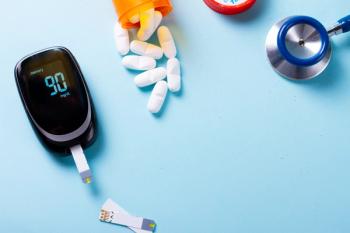
What Does Lymphoma Have to Do with Pharmacy?
Non-Hodgkin’s lymphoma rates are increasing, so how can pharmacists help?
It is estimated there will 74,200 new cases of non-Hodgkin’s lymphoma (NHL) in 2019, making up 4.2% of all new cancer cancers. New combination therapies are improving outcomes, but there will still be an estimated 19,970 deaths due to lymphoma in 2019. “Overall, the rates of NHL are slightly increasing,” says Felipe Samaniego, MD, professor in the division of Lymphoma/Myeloma at MD Anderson Cancer Center, Houston, TX.
The two main types of lymphoma are Hodgkin lymphoma and NHL. Both occur in children and adults and there are a variety of types of NHL that form from different types of white blood cells (B-cells, T-cells, NK cells). Most types of NHL form from B-cells.
“Why rates are presently higher is not known. During the AIDS epidemic when treatment for HIV was not readily available, HIV-associated immunosuppression caused an increase in NHL rates. In recent times, the rates of NHL are slightly higher. The higher rates may be related to a better educated public and wider use of CT scans and other imaging modalities,” Samaniego tells Drug Topics.
He says it is well-known that the more CT scans performed, the more NHL will be diagnosed. An incidental finding of new NHL tends to be clinically insignificant, with minor risk of associated health problems, says Dr. Samaniego. The most common types of NHL in adults are diffuse large B-cell lymphoma and follicular lymphoma. Diffuse large B-cell lymphoma tends to be aggressive while follicular lymphoma is usually indolent.
Dr. Samaniego says the pharmacist has a major task helping patients throughout their course of treatment. “Pharmacists at our medical center play a key role in overview of therapy plans for patients with newly diagnosed NHL. While the oncologist selects and signs for chemotherapy, the pharmacist takes on the responsibility to further look into the safety of medicines prescribed to the patients and pays attention to the potential adverse effects of combined medicines,” says Dr. Samaniego.
He says the pharmacist oversees the overall effects of therapy and optimizes medicines to avoid drug-related toxicity and optimize pain control and nausea control. “The new patient first learns from the pharmacist the best way to manage side effects. If the average chemotherapy program includes 4 to 5 drugs and the average number of medicines to treat side effects including nausea are another 4 to 5 medicines, patient quickly need to learn how to orchestrate taking all these medicines for optimal well-being,” says Dr. Samaniego.
Cancer stage at diagnosis dictates treatment and is associated with the length of survival. Currently, 24.6% of patients with NHL are diagnosed with stage 1 disease and the 5-year survival for stage 1 NHL is 82.6%. Victoria Nachar, PharmD, clinical pharmacist specialist, University of Michigan College of Pharmacy, Ann Arbor, MI, says the new oral therapies across the NHL spectrum have not only improved outcomes for patients with NHL but have brought with them a wide range of new toxicities. “Pharmacists are in a primed position to assist with monitoring and managing these toxicities, both independently and collaboratively with the medical team, so that patients can remain on therapy for as long as possible and derive the greatest benefit,” Nachar tells Drug Topics.
Kyle Grose, PharmD, clinical pharmacist, division of Hematology/Oncology at the University of Virginia Health, Charlottesville, VA, says new oral agents for lymphoma have created a need for a larger pharmacist presence. “However, pharmacist involvement in their care starts long before they’re suffering from side effects of the oral agents. Pharmacists are able to aid physicians in deciding if a patient is even a candidate for taking oral chemotherapy agents based on interacting medications and comorbidities that would prevent a patient from tolerating the oral agent,” Grose tells Drug Topics.
He says pharmacists are also able to assist in getting the patient access to medications. The agents currently used to treat lymphoma are often expensive and unaffordable even for patients with premium insurance. Many patients requiring further assistance through health care grants and/or manufacturer assistance. “Pharmacists are able to navigate this landscape along with the help from pharmacist technicians who specialize in drug assistance,” says Grose.
References:
https://seer.cancer.gov/statfacts/html/nhl.html
Newsletter
Pharmacy practice is always changing. Stay ahead of the curve with the Drug Topics newsletter and get the latest drug information, industry trends, and patient care tips.






































































































































